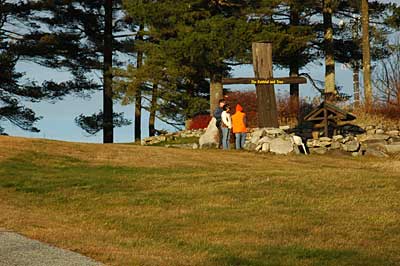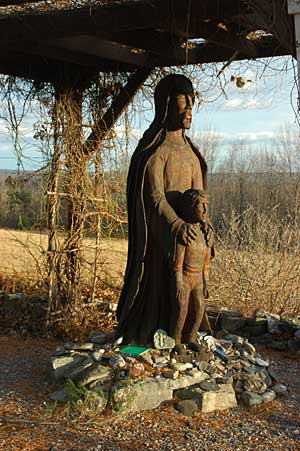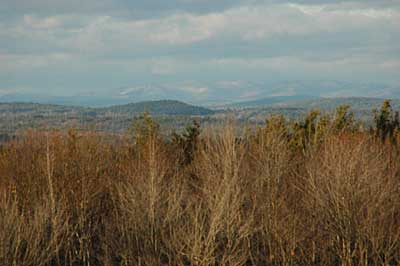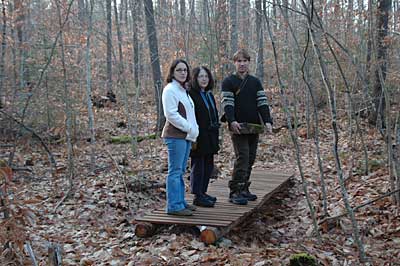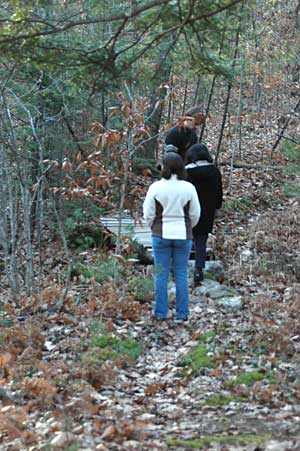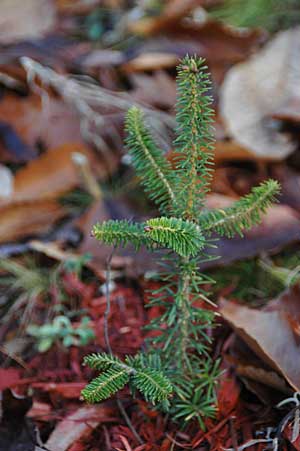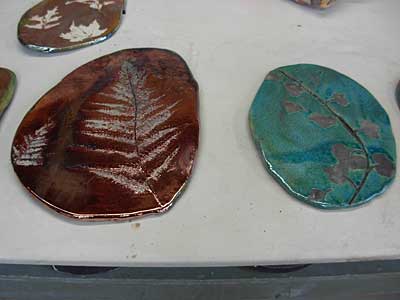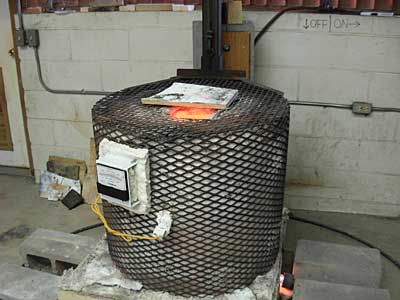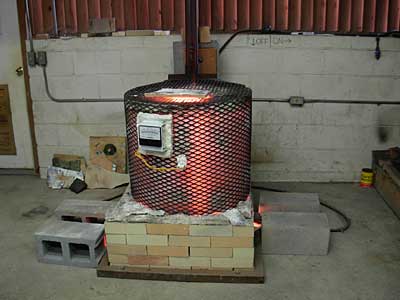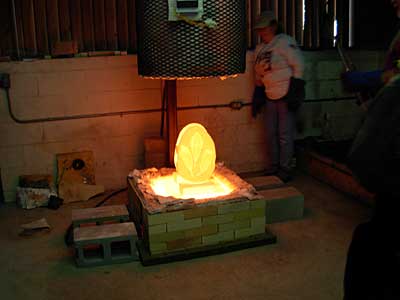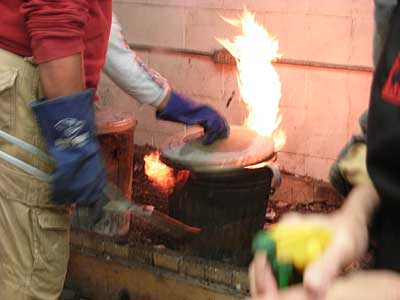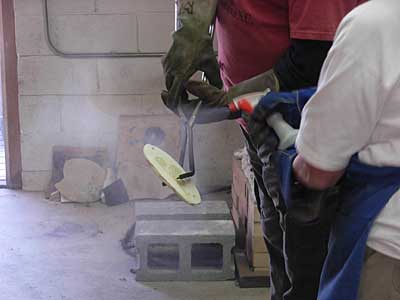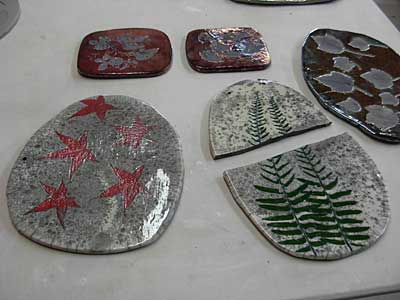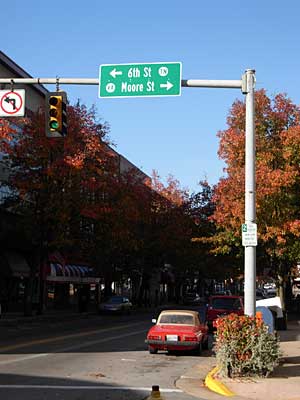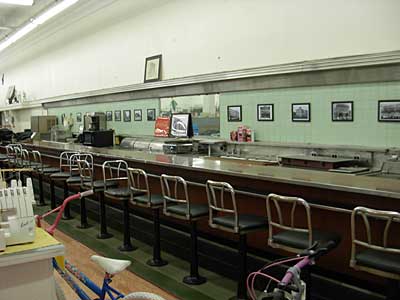Our main sighstseeing stop today was Natural Bridge off I-81 about an hour south of where we spent the night. We weren’t sure we were going to stop until we got right there, because it was raining on and off along the way, and we didn’t want to do a big outdoor activity (and this one had an admission charge of $16 per person, so it had better be good) if it was raining; but the weather had cleared to a minimal drizzle by the time we were there, the AAA book listed it as a gem attraction, and we decided to go for it.
It’s amazing! First of all, you walk down a trail alongside this mountain stream:

The natural bridge is much higher and wider than I expected. That’s spectacular in itself.
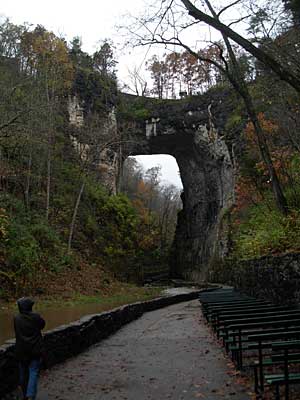
Besides that, it has connections with both Washington and Jefferson: Washington surveyed the area and left his initials on the cliff below the arch (clearly pointed out for visitors!)
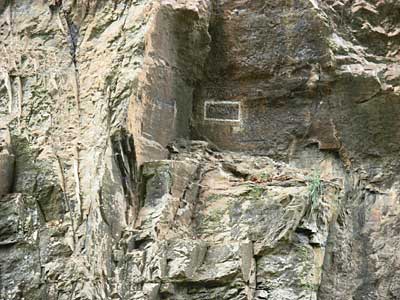
and Jefferson owned the area, having bought about 150 acres around the bridge for 20 shillings from the king. I’m sure that means the royal land office, which knew it had thousands of square miles in what was then called Virginia and wanted to turn some of it into cash, and if a colonial said, “I’d like to buy these 157 acres, including a stone bridge, at the going rate”, was happy to get the money.
150 yards past the bridge was a reconstructed Indian village, with three young people as interpreters. The first of them we spoke to was a man dressed in a coat made from a Hudson’s Bay blanket.
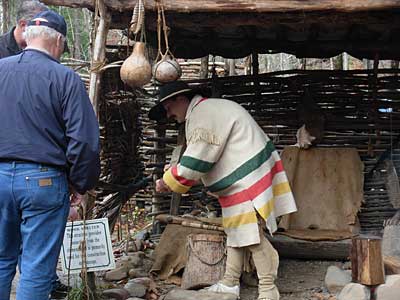
He said that at the time the village represented, aboutg 1720, the people in that area had been trading with the English for over 100 years and were happy to have the European trade goods. The French and Indian wars were fought over who had the right to trade with the Indians. This guy said that the French treated the Indians better in general, but made special low-quality stuff, “Indian trade goods”, to trade — guns that would fire five or six shots and then fall apart, that sort of thing; the English sold them first-quality goods, which of course were much more desirable. He also told us that at that time the Indians had no domestic animals. Anything with four legs was a resource — stick an arrow through it and cook it for food. He said, “They didn’t start riding horses, even though the Europeans were riding horses and they saw that, because they just weren’t thinking that way. If you rode into my village, and I was responsible for 90 hungry people in the village, I would look at that 1400 pounds of protein, and you were going to walk home. I’m barbecuing that horse to feed my village.” He’s very excited about an archaeological site recently found in South Carolina that’s been carbon dated to 35000 years ago, almost doubling the length of time humans have been known to be in North America.
Besides the shelter that guy was sitting under, there was a nice big wigwam (“ati” in the local language) with cattail thatch.
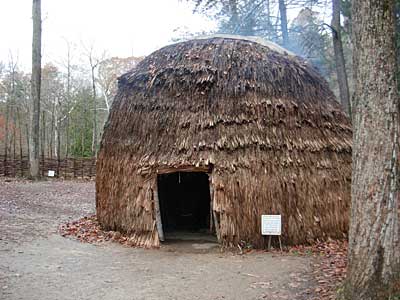
The young women working in there told us about how those were built, how you maintain a fire in them and how the smoke in it helps keep the bugs and mice away and helps preserve food.
Farther along the trail was a cave where saltpeter was mined to make gunpowder, the outlet of an underground river, and a substantial waterfall.
As a bonus, when we left, we saw an animal along the road a little past where our highway (US 11) went over the natural bridge. Was it a big black dog? No — a small black bear!
We got close to the end of Virginia early enough in the afternoon that it was obvious we wouldn’t have any trouble getting to Wildacres long before checkin time for the conference. There was plenty of time to do more sightseeing. We got off the highway at Wytheville, VA, and followed signs for tourist information. It was as good an information center as I’ve seen, with the possible exception of one or two on interstates as you enter a state.
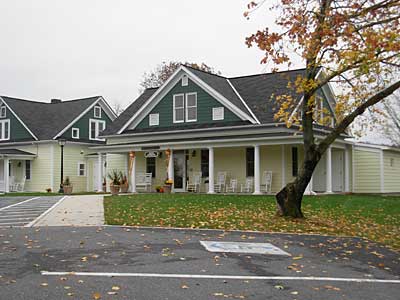
Besides normal tourist trap brochures, there were trail brochures for dozens of state park trails along the blue ridge. There was a little museum of local history and crafts. The women staffing it were extra helpful, and when one of them asked what state were we planning on staying in, I said I thought we’d try to get to Bristol. “That’s what I mean,” she said, “because there’s Bristol Virginia, and Bristol Tennessee.” I slapped Arlene on the shoulder and said, “That’s the place the song is about, where the Ku Klux Klan wasn’t allowed to march on the Tennessee side of the street!”
We took booklets listing accomodations in both Virginia and Tennessee, and followed the women’s advice to go up to the Big Walker Mountain lookout and country store, whose owner would give us a free ice cream cone just for saying they had sent us. Maybe on really clear days you can see five states from the top, three more often; the view is up there with anything on the Mohawk Trail for sure.
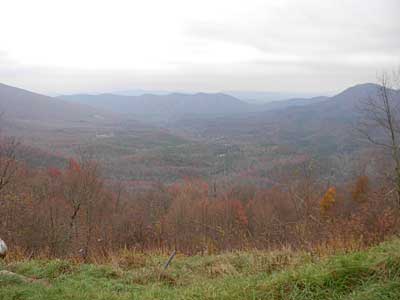
By the time we got to Bristol, Virginia, Arlene had remembered that the song is “Number One in America” by folk singer David Massengill, who comes from there. Because the singing Carter family comes from there, it claims to be the birthplace of country music — but the monster guitar monument we saw was on the Tennessee side.
I need to go see that main street with the state line down the middle!
